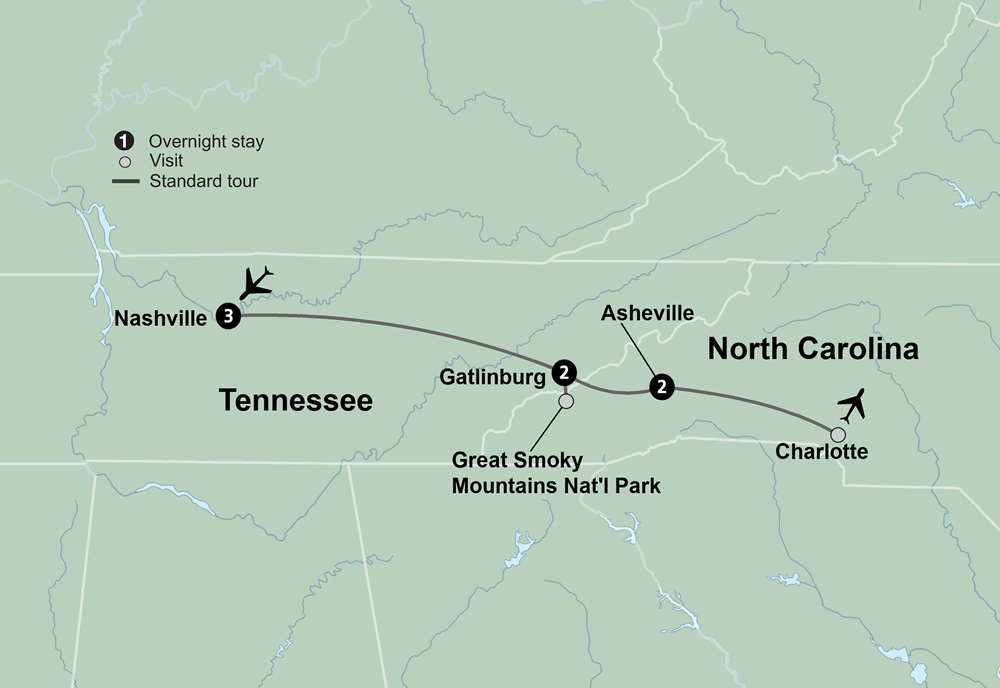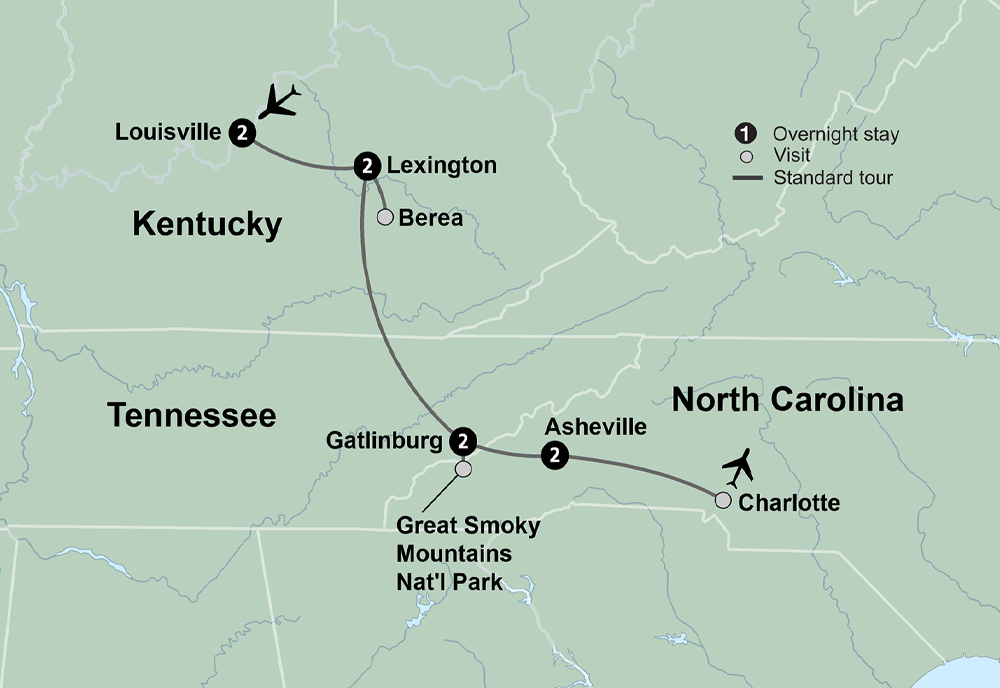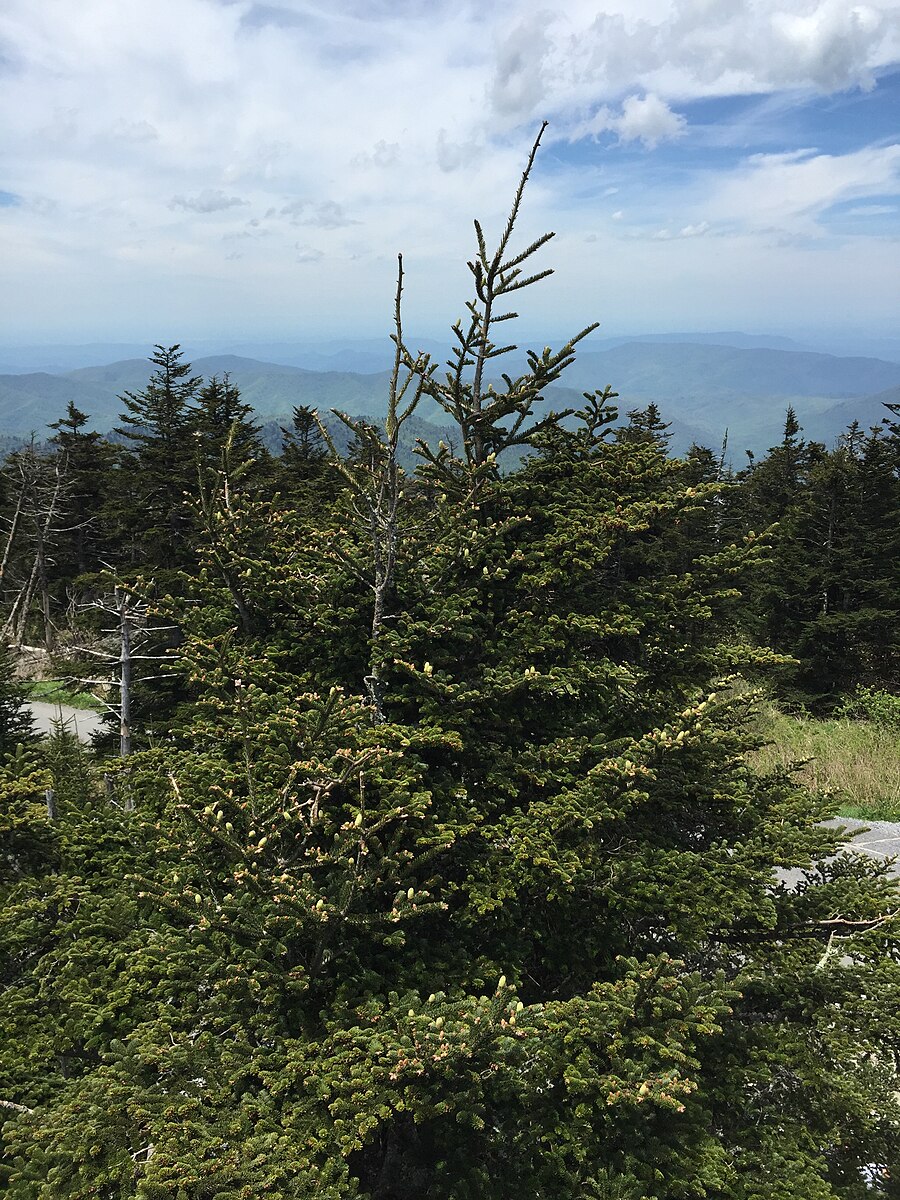Welcome to the heart of the Appalachian Range, where the Great Smoky Mountains National Park sprawls across a landscape rich in biodiversity and natural wonders. This park, a UNESCO World Heritage Site, is not only a refuge for a plethora of wildlife but also a living museum of plant species, each telling its own story of resilience and beauty. Among these, the Fraser Fir stands out—a tree whose presence is as emblematic as the mist-covered peaks it adorns.

The Fraser Fir in Great Smoky Mountains National Park, though not as towering as some of its arboreal neighbors, commands a unique respect. This tree, woven into the cultural tapestry of the Appalachian people and visitors alike, represents a natural heritage that the Smokies have preserved against the odds of environmental changes. Its role extends beyond the ecological, touching the festive spirits of countless homes during the holiday season, making it a cherished symbol of winter’s joy.
As we delve deeper into the essence of the Fraser Fir within the majestic setting of the Great Smoky Mountains, we uncover not only the ecological and historical facets of this remarkable tree but also the pressing need to protect such a treasure. Join me in exploring the magic and majesty of the Fraser Fir, a true gem of the Smokies.
Unveiling the Fraser Fir’s Majesty
The Fraser Fir in Great Smoky Mountains National Park, with its perfect pyramidal shape and lush, rich green needles, is a sight to behold in its natural high-altitude habitat in the Smoky Mountains. Its needles, which are unusually soft to the touch, are arranged in a spiral around the branch, each tipped with a silver sheen that catches the light—a characteristic that adds a sparkle to the dense forests it populates. The bark is smooth and gray, providing a subtle contrast to the vibrant green of its foliage.
Standing amidst these trees, one is enveloped in a fragrance that is distinctly crisp and refreshing—a scent that many associate with the yuletide spirit. The Fraser Fir in Great Smoky Mountains National Park can reach heights of up to 80 feet in the wild, though most mature trees observed by casual visitors are typically smaller due to environmental stresses and the rugged terrain they prefer. This fir prefers the acidic soils found at elevations between 4,500 and 6,500 feet, where cooler temperatures and abundant moisture create an ideal environment for growth.
Visitors to the park are often struck by the serenity of the Fraser Fir forests, which seem to embody the timeless beauty of the Smokies. These trees not only contribute to the aesthetic appeal of the park but also play a critical role in maintaining its ecological balance, providing habitat for myriad species and contributing to the hydrological cycle that sustains the park’s rivers and streams.
A Fragrant History: The Fraser Fir’s Journey
The history of the Fraser Fir in Great Smoky Mountains National Park is as rich as the soil in which it grows. Named after the Scottish botanist John Fraser, who explored the southern Appalachians in the late 1700s, the Fraser Fir has been a fixture in these mountains long before Europeans arrived. Its discovery and subsequent classification have allowed it to become a star of the botanical world, particularly noted for its desirability as a Christmas tree.
This fir became America’s most beloved Christmas tree due to its dense, compact branches and the ease with which it can be cultivated and shaped. Its needles’ ability to retain their pleasing color and texture long after being cut made it ideal for the holiday season, earning it a place in living rooms across the country starting in the early 20th century. Moreover, its pleasant scent adds a festive fragrance that many now associate with winter celebrations.
Interestingly, the Fraser Fir’s popularity as a Christmas tree has contributed both to its fame and to conservation concerns. Over-harvesting and high demand have led to significant impacts on wild populations. This dual nature of economic boon and ecological challenge encapsulates the complex relationship humans have with natural resources, highlighting the need for sustainable management practices.









Ecological Importance: The Fraser Fir’s Role in the Park’s Ecosystem
The ecological role of the Fraser Fir in the Great Smoky Mountains cannot be overstated. As a keystone species in high-altitude forests, it helps define the unique ecosystem of the higher mountain ranges. These trees create dense canopies that shelter numerous plant and animal species, some of which are found nowhere else on earth. The cool, shaded environment beneath their boughs supports a diverse understory of mosses, ferns, and smaller shrubs, which in turn sustain various wildlife species.
Birds, particularly the spruce-fir moss spider and the Northern Saw-whet Owl, rely on the Fraser Fir for nesting sites and hunting grounds. The thick branches provide cover and protection from the elements and predators, making them ideal for supporting avian life. Additionally, the Fraser Fir’s role in water regulation is crucial; they help capture and retain moisture from the frequent fogs that blanket the Smokies, slowly releasing water into the ecosystem, which sustains streams and rivers critical to the park’s health.
Unfortunately, the Fraser Fir in Great Smoky Mountains National Park is facing ecological threats from invasive pests, particularly the balsam woolly adelgid. This non-native insect has wreaked havoc on Fraser Fir populations by feeding on the trees’ sap, weakening and eventually killing them. The loss of these trees has ripple effects throughout the ecosystem, demonstrating the interconnectedness of these mountain habitats and the importance of maintaining the health of key species like the Fraser Fir.
Threats and Conservation Efforts
The challenges facing the Fraser Fir in the Great Smoky Mountains are a testament to the complex interplay between natural and human-induced pressures. Air pollution, primarily from industrial sources and automobile emissions, has led to increased acidification of the soil and air, which stresses these trees, making them more vulnerable to disease and pests. The balsam woolly adelgid, in particular, has been a devastating force, with infestations leading to widespread die-offs in Fraser Fir populations.
Conservation efforts to protect and rejuvenate the Fraser Fir in Great Smoky Mountains National Park populations are multifaceted. Scientists and park officials are employing strategies such as the introduction of predatory beetles that feed on the adelgids, providing a natural form of pest control. Research into resistant strains of Fraser Firs is also underway, with the hope that genetically resistant trees can be reintroduced into the wild, ensuring their survival and the continuation of their ecological role.
Public education and involvement are crucial components of conservation strategies. By informing visitors and locals about the importance of the Fraser Fir and the threats it faces, park authorities hope to foster a sense of stewardship and encourage public support for conservation initiatives. These efforts ensure that the Fraser Fir continues to thrive, supporting the complex web of life that defines the Great Smoky Mountains National Park.
Where to Find the Fraser Fir in Great Smoky Mountains National Park
For those wishing to witness the majestic beauty of the Fraser Fir in Great Smoky Mountains National Park firsthand, the park offers several areas where these trees are prominent. Clingmans Dome, the highest point in the park, presents not only breathtaking panoramic views but also a prime location for Fraser Fir observation. The cool, moist climate at this elevation provides a perfect environment for these trees to thrive.
Another notable area is the spruce-fir nature trail near Newfound Gap. This easy-to-navigate trail offers a close-up view of the Fraser Fir and its ecosystem, allowing visitors to immerse themselves in the unique high-elevation forest. Signs along the trail provide educational insights about the flora and fauna of the area, enhancing the visitor experience.
When planning a visit to these areas, it is vital to prepare for varying weather conditions and to adhere to all park guidelines, including staying on designated trails and practicing no-trace ethics. This not only protects the natural habitat of the Fraser Fir but also ensures a safe and enjoyable experience for all visitors.






Capturing the Fraser Fir’s Beauty Responsibly
Photographing the Fraser Fir and its environment offers a way to capture the essence of the Great Smoky Mountains National Park while preserving its beauty for future generations. When taking photos, it is important to maintain a respectful distance from any wildlife and to avoid disturbing the natural surroundings. Using natural light and avoiding the use of flash can also minimize your impact on the area.
Moreover, sharing images and stories of the Fraser Firs can play a role in their conservation. By showcasing their beauty and the importance of their preservation, photographers and visitors can help raise awareness and promote conservation efforts. It is a privilege to witness such natural beauty, and with that privilege comes the responsibility to advocate for and practice ethical environmental stewardship.
The Fraser Fir: A Symbol of the Smokies’ Enchantment
As we conclude our journey through the Great Smoky Mountains and its enchanting Fraser Fir forests, it’s clear that these trees are more than just a part of the landscape—they are a crucial component of the ecological, cultural, and aesthetic value of the park. The Fraser Fir’s ability to endure, despite the challenges it faces, is a testament to the resilience of nature.
The ongoing efforts to protect and preserve these trees are as vital as the air we breathe, for they ensure that the Smokies remain a haven for countless species and a place of wonder for future generations. By understanding and supporting these efforts, we contribute to a legacy of conservation and respect for our natural world, embodying the true spirit of the Great Smoky Mountains National Park.
Let us continue to celebrate and protect the Fraser Fir, a true symbol of the Smokies’ enchantment, ensuring that it thrives as a cornerstone of this extraordinary biodiverse sanctuary.




Leave a Reply